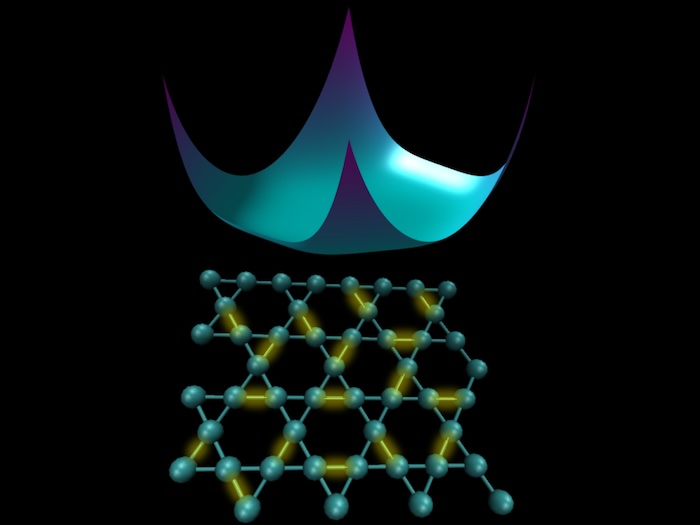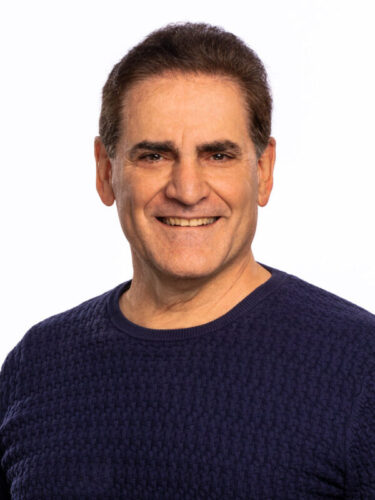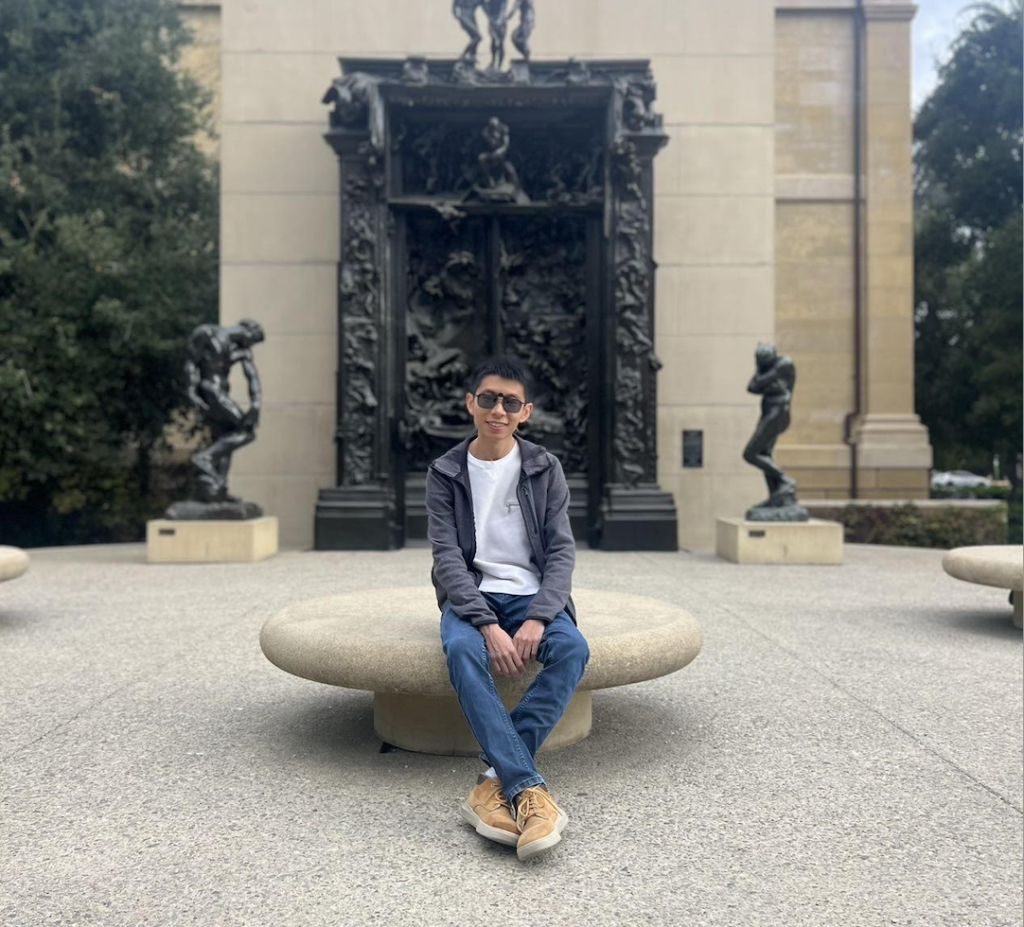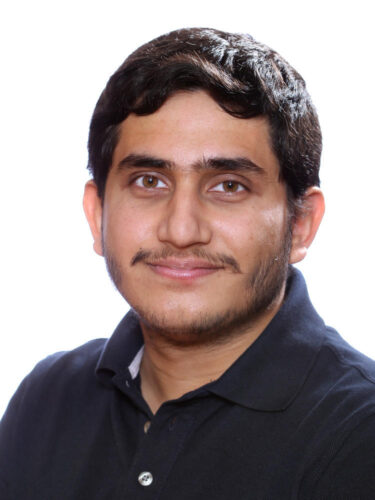Torquato quantifies disordered hyperuniformity in quantum spin liquids

The Torquato Group strengthens our fundamental understanding of large-scale density fluctuations in classical spin liquids and quantum spin liquids with a paper out this week. The Group aims to inspire the search for hyperuniformity in other exotic quantum systems.
PAPER: Anomalous suppression of large-scale density fluctuations in classical and quantum spin liquids
JOURNAL: Proceedings of the National Academy of Sciences (PNAS).
AUTHORS: Duyu Chen, Rhine Samajdar, Yang Jiao, and Salvatore Torquato.
WHAT IT IS: The Torquato Group shows for the first time that the liquid state nature of a quantum spin liquid at very low temperatures is in fact an exotic form of correlated disorder called disordered hyperuniformity. This is the first example of the emergence of hyperuniformity in a strongly correlated, long-range entangled quantum system. Materials supporting quantum spin liquid states may have applications in data storage and memory.
THE CRUX OF THE FINDINGS: At low temperatures, conventional magnetic materials usually form ordered structures such as ferromagnets or antiferromagnets. Quantum spin liquids (QSLs) are novel materials in which strong quantum fluctuations (quantum entanglement) prevent long-range magnetic order from occurring down to absolute zero temperature. In fact, the electron spins in these strange states at very low temperatures remain in a disordered “liquid-like” phase. But what was meant by “liquid-like” was never quantified.
In this paper, researchers unveil that this characteristic is more precisely an exotic form of correlated disorder, called disordered hyperuniformity. A hyperuniform system of particles or spins is one in which density fluctuations at large scales are anomalously suppressed; they are novel states of matter that lie between perfect crystals and typical liquids. It is this hybrid crystal-liquid nature that offers a new paradigm for materials discovery and technological application.
While the hyperuniformity of classical systems has been extensively investigated, its potential extension to quantum systems has been much less explored. The identification of a disordered hyperuniform phase is important because they invariably have singular physical properties due to unusual interactions between the constituent particles or spins.
WHAT THEY DID: Researchers began by analyzing classical spin liquid (CSL). This system is characterized by an extensive ground-state degeneracy and the absence of long-range magnetic order down to absolute zero. Next, they showed that CSLs (certain dimer coverings of a lattice) are disordered and hyperuniform. By adding quantum fluctuations, which induce dynamics between these different classical ground states, they created QSLs. Finally, they analyzed QSLs to demonstrate that metrics based on the framework of hyperuniformity can be used to distinguish the QSL from other proximate quantum phases.
COMMENT FROM P.I. SALVATORE TORQUATO: “It’s generally unusual for interacting entities to remain in liquid-like states down to zero temperature. You can call it a liquid but that is qualitative and lacks specificity. It is critical to understand precisely the nature of that liquid state structurally. Well, we show for the first time that in the case of a QSL, liquid-like really means this exotic form of correlated disorder called disordered hyperuniformity.”

Salvatore Torquato, the Lewis Bernard Professor of Natural Sciences, Professor of Chemistry and the Princeton Materials Institute.
“Hyperuniformity comes in many forms by various mechanisms, but it is always a harbinger of underlying singular behaviors and physical properties. It does not arise willy-nilly. In the instance of QSLs, it comes about because of quantum entanglement, leading to this exotic form of disorder on large length scales. That’s the salient point.
“Whenever people spoke separately about quantum spin liquids or hyperuniformity, usually you heard the words exotic and/or novel applied to each. So now we’re bringing these phenomena together and identifying another novel characteristic of QSLs, namely, they are disordered and hyperuniform.
COMMENT FROM FIRST AUTHOR DUYU CHEN: “The concept of hyperuniformity, pioneered by Sal and Dr. Frank H. Stillinger in 2003 at Princeton, is a powerful framework that can be used to characterize and differentiate different types of disorder in amorphous systems. Characterizing disordered systems is often a challenging task, given that there are so many ways to be disordered, and unlike ordered systems such as crystals, disordered systems cannot be characterized by simple metrics such as lattice parameters and space group.”

First author Duyu Chen, former graduate student in the Torquato Group.
“After graduation from Princeton, over the years, I worked with many other collaborators (in particular Dr. Yang Jiao) to apply this framework of hyperuniformity to unveil the nature of disorder and discover new structure-property relationships in various systems such as amorphous 2D materials, nanotubes, high/medium-entropy alloys, block-copolymer assemblies, and tree leaves, to name a few. The current work on quantum spin liquid is another successful attempt. We believe the full potential of this framework is yet to be realized and recognized.”
Chen is doing his postdoctoral work at the University of California, Santa Barbara after receiving a master’s in business technologies from Carnegie Mellon University. He earned his doctorate under Torquato’s advisement in 2018.
COMMENT FROM CO-AUTHOR RHINE SAMAJDAR: “Today, we know of certain intriguing topological materials, known as quantum spin liquids, which defy the expectation that they are ordered at low temperatures. Quantum spin liquids (QSLs) are exotic highly entangled phases of matter (often induced by “frustration” between competing interactions), which do not order down to zero temperature.”

Co-author Rhine Samajdar, a fellow with the Princeton Quantum Initiative.
“The spin liquid state described above is, by definition, a liquid, i.e., it lacks any regular spatial order unlike, say, a crystal. As a matter of nomenclature, we can call this state as being “disordered” or “uniform.” However, there are many distinct ways in which a state can be disordered, and disordered hyperuniformity is one special type. The notion of hyperuniformity gives us a framework to characterize the long-range density fluctuations in such disordered systems, and thus it allows us to understand the structural properties of the spin liquid state.”
Samajdar is a fellow with the Princeton Quantum Initiative.
RESEARCH SUPPORT: Researchers acknowledge the support of the Princeton Quantum Initiative, and the Army Research Office under Cooperative Agreement No. W911NF-22-2-0103.
FOR FURTHER READING: Recent paper from the Torquato Group on hyperuniformity: Haina Wang, Rhine Samajdar, and Salvatore Torquato, Correlations in interacting electron liquids: Many-body statistics and hyperuniformity, Physical Review B, 110 104201 (2024).
TORQUATO GROUP SITE: https://torquato.princeton.edu/
